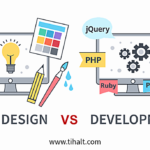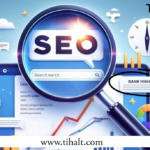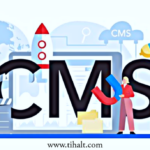Email Marketing
Email marketing is one segment of internet marketing; it is essentially direct mail done electronically instead of through the postal service. Anytime a company sends out an email, aside from order confirmations and immediate responses to customer questions. It involves email sending advertisements, requesting business, or soliciting sales or donations.
Email marketing helps you connect with your audience to promote your brand and increase sales. You can do many things with emails, like sell products, share some news, improve your cart abandonment rate or tell a story.
Email marketing is one of the most cost-effective ways to communicate something about your brand or sell your stuff. It allows you to target particular groups of customers or even specific individuals. Offering individual customers special deals on merchandise or services is one way.
It is found that email has the highest return on investment (ROI) than other marketing channels. When shoppers are ready to buy something, they often look for emails from their favorite store.
Email Marketing Examples
Here are some definitive examples that guide you through the process of getting started with an email marketing company in Bangalore and help you achieve business success.
Step 1: Set Up Your Email Marketing Goals
Firstly, you should think about your goals and what you want to achieve with email, as that will dictate the type of campaigns you send, who you target, the content you include, and how you measure success.
Email should be a vital component of every digital marketing plan because it effectively drives conversions and builds brand loyalty.
Kinds of Email Marketing Goals
If you have a news and entertainment website that earns revenue by selling advertisements on the site, the key objective of the marketing is to drive more traffic. You can send regular email newsletters containing links to stories on the website to increase the number of visits each month and increase revenue.
If you have the business of selling suits, t-shirts, and other surfing goods. Your marketing goal is to increase sales, so you can use email to promote new products you’re launching and drive people to your online or physical stores to purchase those products.
If you have a charity organization that provides humanitarian aid and assistance to needy people. So, you can use email marketing to reach out to the donor base, educate them on aid projects you are undertaking, and ask for donations.
If you have the business of organizing some of the most well-known events in the world, your marketing goal is to increase ticket sales and attendees at these events, so you can use email marketing to keep subscribers up to date as new artists and speakers join the line-up
If you have a members-only club, your marketing goal is to keep your member engaged in the club and ensure they use the facilities regularly. So, you can use email marketing to keep your members up-to-date on events and functions they can attend
Thus, planning what you want to achieve with email before you start sending makes it much easier to identify what to send and who to send it to and helps you create focused, high-performing email campaigns that will achieve your marketing goals.
Step 2: Build Your Marketing List
After setting up the goals that have to be achieved from email marketing services, it’s time to build your email list to start sending campaigns to those goals. There are different ways to build your email list, but the suitable method for each campaign depends on the goals you set.
Sending an email to a list of known contacts, you can send an email for promoting your new stuff by importing a general contact list and sending the details of your products offers and more. There are different kinds of email marketing tools you can use to create your email beautifully by importing a contact list.
If you have a website, you can send an email to the person who logs in to the website, then offering them your best content via email is a powerful incentive for them to join your list. Offering people, a discount on their first order if they subscribe to your email list is a fantastic incentive if you sell goods through an online store.
Offering free or upgraded shipping on your customers’ purchases is a great incentive to join your list. You can build your email list by creating a pop-up or slide-in for each page of your site or a timed pop-up survey related to your content after visitors log in to the website.
You can have a Header Bar sits at the very top of your website and contain a call to action encouraging people to join as well as a form to input their email address. If your site uses a sidebar, this is an ideal place to embed an opt-in for your subscriber list. Ideally, you want the opt-in to be above the fold in the uppermost space of the sidebar for maximum visibility, ensuring it’s seen first.
End-of-post opt-ins are a great place to grab subscribers. When a visitor reads your content, you can ask them to sign up to ensure they never miss out on upcoming content. By following the email list-building ideas mentioned above and providing a valuable incentive with prominent subscribe opportunities, you’ll find it easy to build a new audience for your email marketing campaigns.
Step 3: Select the Type of Email Campaigns
There are different types of campaigns depending on the goals of your business. You can send an email newsletter, a regularly distributed email campaign that is generally about one main topic of interest with tips & stories.
You can send a marketing offer email which is an essential campaign to drive direct response. It is a campaign showcasing some of the latest stock and encouraging people to purchase. Also, offering a discount or special promotion on your products or services includes a direct call to action for people to click-through to your website and make a purchase.
You can send an announcement campaign; an email sent to your subscribers and existing customers announcing a new product, feature, or service to keep them up-to-date. While sharing information is the primary goal, email may have the added benefit of driving people back to your store or website where they can make a purchase.
You can send an event invitation email, a campaign designed to increase awareness of your event and encourage people to attend with the details, date, time, and location of the event.
As mentioned before, the type of email campaign you send depends entirely on your goals with email. If you are looking to drive direct sales, then sending marketing offers and announcement campaigns will return the best results.
Suppose you are simply looking to keep your existing customers up-to-date on the latest projects, products, or developments at your company. In that case, sending a regular newsletter will be the best way to achieve that.
Step 4: How to Create Your First Email Marketing Campaign?
After deciding your goals, building a bit of an audience, and selecting the type of campaign you will send, it’s time to start building your email.
Make your Campaign Easily Readable
Sending a long, text-heavy email campaign isn’t the best approach. You have to organize your emails to help draw people into reading your content while guiding them toward the email’s call to action. This allows you to ensure your campaigns grab people’s attention and get a high click-through rate.
Use Images and Visuals to Boost Engagement
As both video and images are more eyes catching. They’re also more memorable and help content stand out. People can recall visual range up to three days later than text-based content.
People also follow visual instructions better than written instructions, so it’s a good idea to use visuals when directing your readers to take the desired action.
Personalize Your Email Campaigns
Your readers are most likely to respond to content that is most relevant to their interests. Start by adding their name in the subject line, and then customize campaign content depending on their needs and interest.
Make Sure Your Campaign is Relevant to Every Subscriber
It would be best if you categorized subscribers into different list segments. List segments make it easy to choose what content to send to which subscriber. When you can personalize content and make it more relevant to a specific group, you improve response rates. The segmented and targeted emails can generate higher email revenue.
Here are some standard email list segments you can create to increase click-through in your campaigns and plan more targeted content based on those segments:
You can sort subscribers based on their locations for promoting store-specific information and targeting specific markets while ignoring out-of-location subscribers where the message wouldn’t be relevant.
You can use demographics for customizing campaign messaging based on age and gender.
You can segment users based on the market/industry interest to avoid sending the same email to everyone. Instead, tailor the message to industry/product/market-specific content.
You can segment subscribers by past open and click-through behavior. Study behavior to determine what content works best for specific segments to customize future campaigns.
You can create campaigns specific to subscribers who fall within certain stages of your funnel, like sending a campaign only to those subscribers who are more than 50% through an auto-res-ponder series.
Make Sure Your Campaigns are on Brand and Build Trust
Must align your email campaigns with the colors, fonts, and branding you use across all your other customer touchpoints so that your customers have a consistent experience with your brand. By applying these campaign tips to your email, you’ll be able to create and send a campaign that captures subscribers’ attention, presents them with relevant information, and makes it easy for them to understand.











